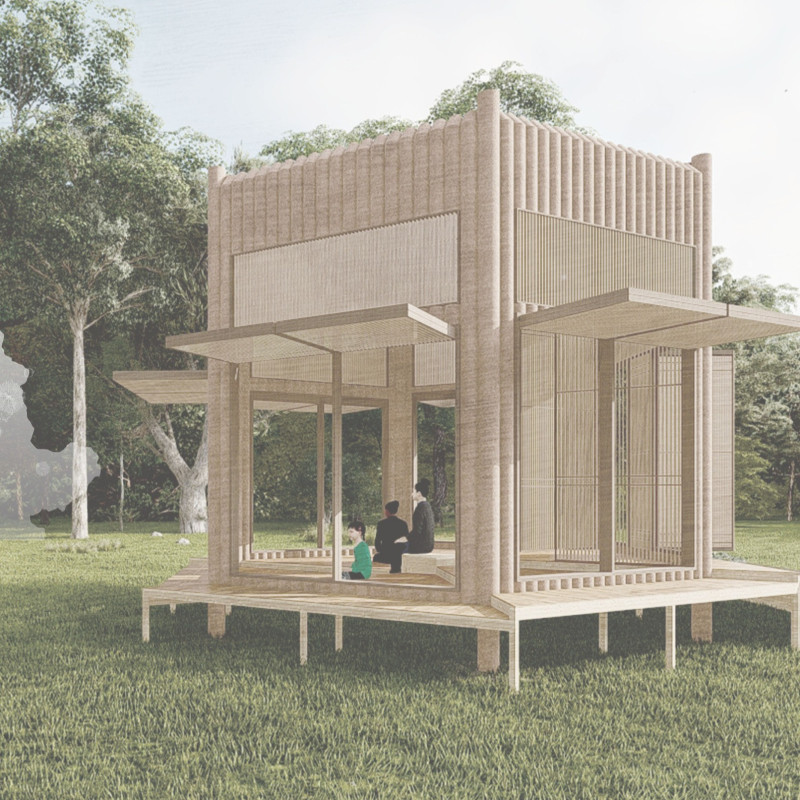5 key facts about this project
The RESONATE CABIN addresses challenges of the digital age by focusing on mental clarity and connections among people. Located in a natural environment, the cabin provides a space for meditation, relaxation, and social interaction. The design uses geometric shapes to create an environment that supports personal reflection while also allowing for meaningful conversations.
Geometric Forms as Structure
The design incorporates a square, circle, and hexagon to shape different experiences within the space. The square offers structural stability, while the circle enhances visibility throughout. The hexagon combines these elements, ensuring that meditation areas are evenly distributed, accommodating group gatherings as well as quiet times for individuals.
Cultural Context and Inspiration
Inspired by Jung-Ja, a traditional Korean pavilion, the RESONATE CABIN bridges cultural history with a modern design approach. This connection enriches the narrative of the space and ties contemporary users to past practices of meditation and relaxation.
Natural Light Integration
Natural light is a key feature of the cabin, entering through paper tubes wrapped in transparent polycarbonate. This choice not only helps create a peaceful interior but also directs focus to the landscape outside. The darker surroundings enhance the meditative atmosphere, drawing users into a deeper connection with their environment.
Flexible Interaction with Nature
Openings are present in every area, except for the entrance, allowing different interactions with the outside. Ten independent vertical folding doors provide flexibility, catering to those seeking solitude or those wishing to socialize. When the doors are opened, they connect the interior to the exterior, encouraging a rich interaction with nature.
The design culminates in the Flower Essence Zone, where activities outside can deepen the experience of nature. This aspect captures the essence of the space as a place dedicated to meditation and personal reflection.






















































